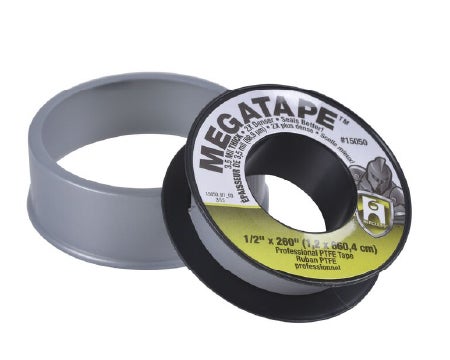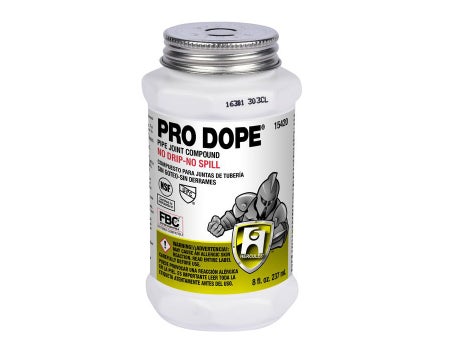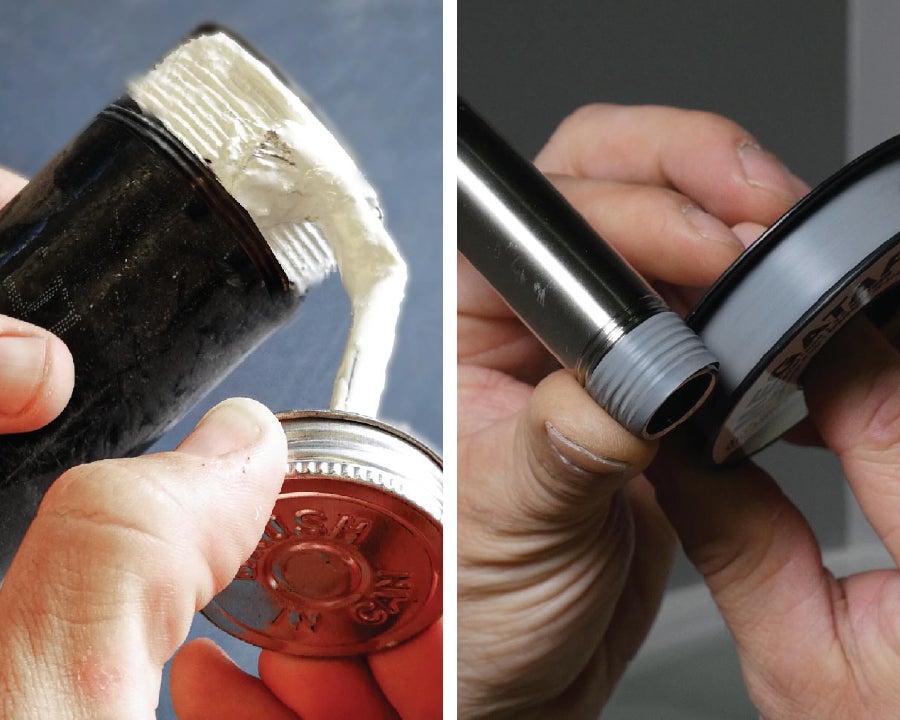When working with threaded pipe connections, one of the most common questions is whether to use pipe dope or Teflon tape. Both products are designed to seal pipe threads, prevent leaks, and ensure a secure connection. But they differ in form, application, and best-fit scenarios.
Pipe dope is a thread sealant paste. PTFE tape - often referred to as plumber's tape or by the brand name Teflon® tape - is a thread sealant tape used for the same purpose. Oatey offers trusted options for both categories, and understanding their differences will help you choose the right solution for your project.
This guide compares pipe dope (thread sealant paste) and Teflon tape (thread sealant tape), highlights their similarities, and explains when to use each. For a full overview of sealing threaded connections, see [How to Seal Pipe Threads Properly].
What They Have in Common
Despite their different forms, both pipe dope and Teflon tape serve the same essential purpose: sealing threaded connections. Threads are tapered, leaving small gaps that can allow water, air, or gas to escape. When applied correctly, either tape or compound fills these gaps, preventing leaks and creating a reliable joint.
Both sealants:
- Work on tapered pipe threads (NPT connections).
- Prevent leaks by filling thread voids.
- Come in formulations suitable for water, gas, and high-pressure systems.
If you'd like to learn more about choosing and applying the right option for your system, check out How to Select and Apply Pipe Thread Sealant.
Plumber's Tape vs Pipe Dope: Which Should You Use?
| Feature | Pipe Dope (Thread Sealant Paste) |
PTFE Tape (Plumber's Tape) |
|---|---|---|
| Form | Paste, applied with a brush | Thin film tape, wrapped around threads |
| Best For | Large fittings, high-pressure systems, gas lines | Small fittings, DIY projects, household water lines |
| Cleanliness | Can be messy if over-applied | Dry and clean to apply |
| Plastic Pipe | Some compatible (check label) | Generally safe on all pipe types |
| Gas Lines | Only with gas-rated products | All Oatey tape is approved for gas; some local regulations require yellow |
| Cure Time | Some compounds harden, while others stay flexible. Check the manufacturer's label for the exact time. |
No cure time |
| Application Skill | Slightly more advanced | Beginner-friendly |
| Shelf Life | Can dry out or expire | Indefinite; tape never spoils |
| Pressure Rating | High psi, varies by product Check the manufacturer's label for the exact rating. |
Up to 10,000 psi (varies by thickness) |
| Temperature Rating | 500°F or higher, depending on the formula | Up to 500°F |
If you are wondering when to use thread tape versus joint compound, the general rule is that tape works best for small and medium fittings, while compound provides extra sealing strength for larger or pressurized joints. Both can be used together on large or critical joints if desired.
If you're looking for a premium option, consider Hercules® MegaTape, a professional-grade PTFE tape designed for both DIY and trade applications.
When to Use Plumber's Tape vs. Pipe Dope
Use Teflon tape when:
- Thread size is small (≤ 1").
- You need a quick, clean application.
- Working on household water lines or low-pressure jobs.
- You want a product with an indefinite shelf life.
For step-by-step instructions, visit [How to Use Plumber’s Tape: Step-by-Step Guide].

Use pipe dope when:
- Working with larger threads or fittings.
- You need a solution rated for gas or high-pressure systems.
- Dealing with stainless steel, brass, or galvanized pipe.
- You prefer a paste that thoroughly fills gaps and adds sealing strength.
For application tips, see Pipe Joint Compound (Thread Sealant Paste) Tips and Best Practices.

Can You Use Both Together?
Some professionals apply both: wrapping the male threads with tape first, then brushing on a light coat of pipe dope over top. This combination can provide extra sealing strength in critical or high-pressure connections.
However, it's important to follow manufacturer recommendations. Not all products are intended to be used together, so check the product label or the Oatey application guide before combining sealants.
We recommend a combination such as Hercules® MegaTape with Hercules® Megaloc for a secure seal in large or pressurized systems.

Frequently Asked Questions
-
Which is better: pipe dope or plumber's (Teflon) tape?
-
Neither is universally better. Teflon tape is versatile, clean, and long-lasting, while pipe dope provides extra strength for larger or high-pressure joints. Many professionals keep both on hand.
-
-
Is it okay to use both Teflon tape and pipe dope?
-
Yes, as long as the products are approved for combined use. PTFE tape plus compound can create a stronger seal on large or critical joints.
-
-
Can I use pipe dope on plastic fittings?
-
Some formulas are compatible, but always check the label. Teflon tape is generally safe for all materials.
-
-
Can I use pipe sealant for gas lines?
-
Yes, but use only yellow PTFE tape specifically rated for gas service. While all PTFE tape is chemically inert, local codes often require color coding.
-